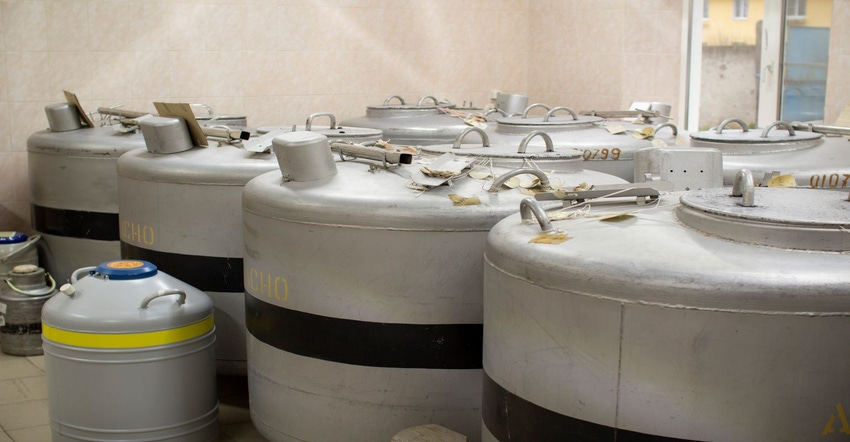Currently, there is a lot of interest in the 7 & 7 Synch fixed time systems for cows and heifers.
April 17, 2023

The 2023 Bovine Estrus Synchronization Planner is now available from the Iowa Beef Center. As before, all you need is a computer (PC or MAC) with a copy of MS Excel installed to make this application work. The Multigroup version requires a PC with Windows and MS Excel.
Now on to the heart of the matter, what system works best? There are 48 systems currently loaded into the planner. Some are labeled as “preferred,” others “less preferred,” and some have been superseded for one reason or another and no longer appear listed. As you may perceive, the preferred systems generally work the best in getting cows bred and within these preferred systems there may be some systems that work better in one situation versus others. To be considered a “preferred system” the Beef Reproduction Task Force has three criteria: 1. The system must be effective in achieving good conception rates across a number of environments with peer-reviewed data supporting the results. 2. It is not too complicated to follow and 3. It is not too costly (or illegal based on the hormones required) to implement.
You may find that occasionally other countries promote slightly different systems than what are contained in this Planner and those systems may use a different hormone cocktail other than progesterone, PG and GnRH. For instance, Brazil will use estrogens as well to synchronize cows, and CiDRs sold in Canada may have a higher progesterone concentration than CiDRs approved in the United States. This occurs since other countries do not have the same regulations that we have in the United States.
Currently, there is a lot of interest in the 7 & 7 Synch fixed time systems for cows and heifers.This system has shown to induce visible estrus signs by the time of fixed time AI in cows and thus has gained popularity. The Task Force has been slow to promote this system as widely as some would like due to the higher level of animal handling with questionable improvements in actual conception rates over the other preferred systems. However, it is contained in the Planner and has been promoted as a “preferred” system now.
For animals that are capable of sustaining an estrous cycle, but may need to “wake up” the cycle, systems that utilize a CiDR are generally recommended. These systems became popular in dairy cows years back to do this very task when high production or heat stress may have been causing anestrus in cattle.
Systems that use MGA (melengestrol acetate) are only to be used for heifers (MGA does not have approval to be used in cows for synchronizing estrus.) MGA mimics progesterone keeping the animal from expressing estrus. The MGA level used is double the rate used when feeding this in feedlot heifer finishing rations. This higher level intended for synchronization is only to be fed for 14 days. Feeding this high level for a longer period can lead to residues and this can interfere with the clearance of the hormone necessary for the follow-up hormones to have the proper effect for ovulation.
Feeding the lower feedlot rate rather than the higher synch rate may not give the proper progesterone effect required to truly synchronize the whole group. These feeding errors are the number one reason why the MGA synch protocols fail. When the MGA is removed, estrus is expressed in about two days, but this first estrus is not the one used for breeding. The second estrus is the target. The 14 Day CiDR+PG system, sometimes called the “Show Me Select” because it was developed in Missouri, uses a CiDR rather than MGA and has a similar mode of action, but is shorter term in that we do not need to wait until the second estrus to breed.
There are a couple of 5-day CiDR protocols that require back to back PG injections 2 to 8 hours apart. Although a little inconvenient from an animal handling perspective, from personal experience, these systems seem to be very effective in obtaining high conception rates. The reason for the double PG injections is that it seems the first one matures the corpus luteum (CL) and the second leads to the release of the CL. A GnRH injection at the time of AI induces ovulation with hopefully a calf to follow in nine months.
The lowest cost systems work with just a PG or possibly a PG + GnRH injection. These systems work on animals that are already expressing estrus regularly and your sole purpose is to put these animals into a breeding group. These low-cost systems are generally not Fixed Time AI programs, so do require some heat detection.
Finally, the use of sexed semen has resulted in a number of modifications to some of these existing protocols to obtain satisfactory results. These modifications are seen in the fixed time protocols, and generally the timing between the last PG injection and AI is where the modification lies. This then led to the use of Split Time AI where those animals showing estrus are given the sexed semen on sight and those which are not expressing estrus are given conventional semen and a GnRH injection.
You May Also Like

.png?width=300&auto=webp&quality=80&disable=upscale)

